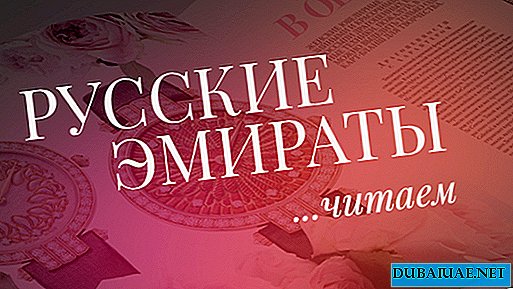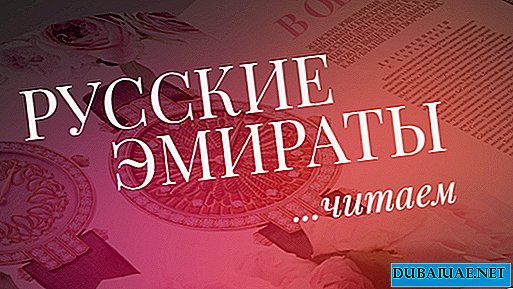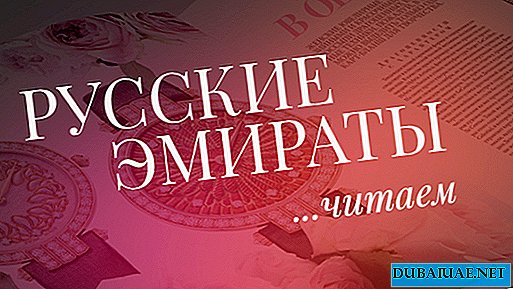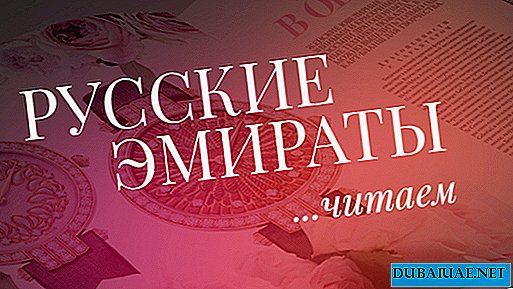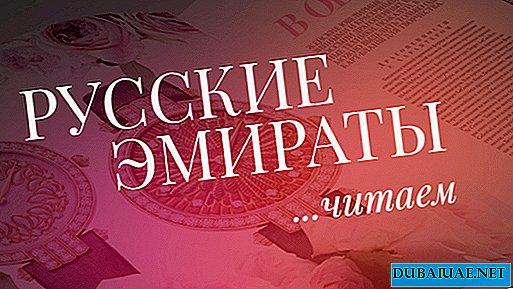 Emirates is fragrant on holidays. Perfume smells are mixed with smoke aromas. Home salons, clothes of local residents are shrouded in clouds of incense. On a festive day, having passed in an elevator with the Emirate family, you will stay for several hours accompanied by unusual, multi-layered, steady and bright smells of celebration.
Emirates is fragrant on holidays. Perfume smells are mixed with smoke aromas. Home salons, clothes of local residents are shrouded in clouds of incense. On a festive day, having passed in an elevator with the Emirate family, you will stay for several hours accompanied by unusual, multi-layered, steady and bright smells of celebration.
Local and European perfumes, woody aromatic substances are used to scent odors. Emirates, of course, pay tribute to the aromatic taste of France, which remains the legislator of perfumes and other fashion and the world leader in the production and export of odors that satisfy the needs of the most demanding aesthetes. But local traditions, acquired in the process of long millennia, remain unshakable.
Smokes are preferred here. There is nothing surprising in this addiction. In France, the first patent for perfume was registered in the 12th century. In Arabia, Egypt, Phenicia, aromas were produced and used in everyday life and religious ceremonies long before the Christian era. The Phoenicians, for example, believed that a person has two souls - spiritual and vegetable. The first is breathing, which disappears from the body at the time of death. They accompanied the outcome of the soul with aromas. In combination with the incense incense, sacrifices were carried out. Native Americans also used tobacco smoking as a ritual. It symbolized the ascent of the soul to heaven. Tobacco was considered sacred grass. In the ancient world, odors were used not only for spiritual purposes. In high life, they also found a place. Cleopatra put scented sails on her boats, so that a good smell foreshadowed her arrival at the royal sites.
The main thing in local traditions is not perfume, but fumigation with aromas. Perfumes, if present, are only one component of a bouquet of smells. The main part is oud.
Let us leave aside the Arabic musical instrument - the lute, which is called "ud." The first meaning of this Arabic word is “trunk”, “stem”, “tree”. In a figurative sense, oud is called what is used to incense, the basis of which is the production of perfumery and other mods that remains the legislator and the world leader in the production and export of odors that satisfy the most demanding aesthetes. But local traditions, acquired in the process of long millennia, remain unshakable. Smokes are preferred here. There is nothing surprising in this addiction. In France, the first patent for perfume was registered in the 12th century. In Arabia, Egypt, Phenicia, aromas were produced and used in everyday life and religious ceremonies long before the Christian era. The Phoenicians, for example, believed that a person has two souls - spiritual and vegetable. The first is breathing, which disappears from the body at the time of death. They accompanied the outcome of the soul with aromas. In combination with the incense incense, sacrifices were carried out. Native Americans also used tobacco smoking as a ritual. It symbolized the ascent of the soul to heaven. Tobacco was considered sacred grass. In the ancient world, odors were used not only for spiritual purposes. In high life, they also found a place. Cleopatra put scented sails on her boats, so that a good smell foreshadowed her arrival at the royal sites with a calcareous instrument - a lute called ud. The first meaning of this Arabic word is “trunk”, “stem”, “tree”. In a figurative sense, oud is called what is used to incense, the basis of which is derived from aromatic trees, imported mainly from India and other Asian countries, including Kampuchea, Vietnam, Laos, Burma, Malaysia, Indonesia.
There are dozens of types of oud. In the first place in terms of quality is Indian. It is very expensive. The price of a kilogram of Indian aromatic mixture reaches 70 thousand dirhams (19 thousand dollars). Compare with the value of gold. And in ancient times, aromas were more expensive than yellow metal. Steady situation.
Smells in the country and in the Arabian region as a whole are in great demand. Along with the Indian, Cambodian, Vietnamese and Lao oud are praised here. Each of them has a special aroma and has a stable smell. But a kilogram of Cambodian oud is valued at half the price of Indian. However, this habitual measure of weight for accounting for oud is rarely used because of its high cost. Kilograms are left for wholesalers. In stores, the main weighted measure of aromas is the Indian "tulah", which is 12 grams and is also used to weigh jewelry.
Satisfactory oil is obtained in the process of wood distillation. In India, aromatic trees, primarily rotten ones, are cut into small pieces and crushed in metal mortars. In Thailand, wood is ground in mills, turning into powder. Then chopped wood powder is soaked in water for several weeks.
The soaked mixture is placed in boilers and distilled, using only firewood to maintain moderate heat, since they burn more slowly and give the most intense heat. Distillation lasts for weeks. The distillate is collected, poured into vessels and kept in the sun to evaporate the liquid. A kilogram of wood gives only 3-9 grams of fish oil, depending on the quality of the tree.
Oil in mixtures goes on sale. Its quality can only be determined by accelerating smoking. By the way, the author of the invention of steam distillation is called the Arab philosopher and great healer Avicenna, who lived at the turn of the 10th and 11th centuries. It was he who first extracted rose oil from the petals of the "Queen of the Flowers" and produced a fragrant liquid.
In China, frankincense was even used to protect paintings from grinder bugs. Avicenna advised using frankincense for healing the air. Some traditional healers believe that incense "strengthens the mind, heart and soul", cures forgetfulness, stops bleeding, and cleanses the skin of lichen. Modern scholars recognize the justice of the popular belief in the healing power of frankincense. It is believed that its aroma relieves stress and strengthens memory. Resin contributes to the cessation of inflammatory processes, inhibits microbes in the air, water and the human body.
According to Arab beliefs, incense smoke "pacifies the wrath of the lords and casts out evil spirits." The anti-Bessian power of incense is also recognized by Russian people. It has long been said in Russia: "The thief is in prison, the devil is incense."
Is it not these healing and purifying properties that contributed to the penetration of incense into the censers of the priests of Ancient Egypt, the censer of Christianity, the rites of other religions of the world?
The legendary tree grows on calcium-rich soils of mountain valleys. It rises from the ground at once with several trunks the thickness of an arm up to 3-5 meters in height. In February-March, small incisions are made on the bark of trees. Through cuts on the smooth bark, whitish lumps of thickened juice protrude. From one tree receive 10-20 kilograms of resin per year.
Several thousand people are engaged in collecting incense in the Sultanate of Oman. The resulting yields are several thousand tons of tar per year.
In the capital of Oman, Dofar Salal, unlike the traditions of Arabia, where it is customary to treat guests with coffee and dates, they brought me directly from the airport to a grove of coconut palms. An Omani in a scarf and a bright plaid skirt (wisar) made of a single piece of fabric, wraped around his hips, cut several nuts. Together with the heir to the sheikh of the local tribe Tabuk Amer, we drank and walked around the market. My attendant was greeted by many oncoming ones. He recommended some as slaves of his father, set free in his memory.
In Salalah's shopping arcade, the main commodity is incense. In cellophane bags and sacks, with clay tetrahedral braziers and silver round censers, in addition, they are sold by tanned daughter-in-arms in colorful clothes with gold jewelry in the nose.
Dofar is the birthplace of incense, which can not be grown either in other areas or in special greenhouses. The four-thousand-mile "incense path" to the southern Palestinian Mediterranean began from the local mountain trails, and from there to the temples of Egypt, Rome, Greece and Russia.
On a beautiful highway, winding among the limestone mountains to the very border with Yemen, Amer and I are going into an incense grove. In the stone-strewn gray valley, palisades of trees stick out more like tall bushes. What could be called a crown is covered with a rare velvet of small leaves. Through the cracks of the smooth bark, whitish lumps of hardened juice protrude. Amer removed the almost transparent, hardened tear of a wounded tree and offered to taste it. Powdery clot sticks to the teeth. It has a soft coniferous aroma. The resemblance to the fragrance of incense smoke is quite distant: that smell is much sharper. Yes, it is understandable: local incense burners and Christian censers contain not only incense.
Resin of a tree, called in Arabic "Lyuban" and known in Christianity and in Russia in the form of "Lebanon", the inhabitants of Arabia used to fumigate their homes, clothes, and "strangled" what they still do. It was from the fumigated Arabian tents that incense fell into the altars and censers of temples. That's where the sources of perfumery and the word itself are (per fumus in Latin means "through smoke").
Emirates, meeting guests with aromas of oud and frankincense, improve the home atmosphere. By smoking incense, they escort dear visitors, creating a cloud of aromatic health in their surroundings. If, at the end of a conversation or a meal, the owner again takes up the censer, then the guest needs to leave. A popular proverb says: “Baada-l-ud mafia kuud” (There is no sitting after smoking).
Victor Lebedev


